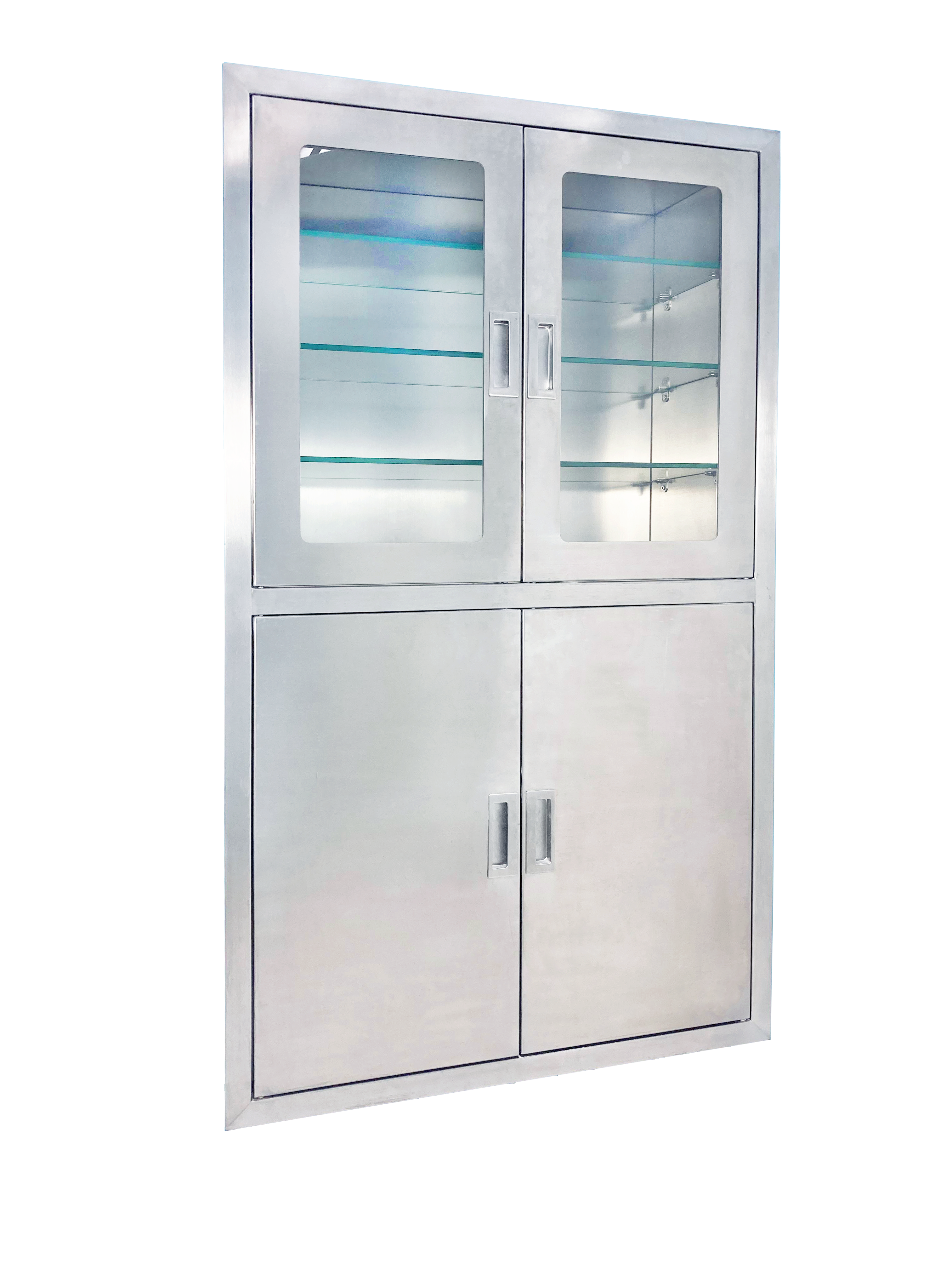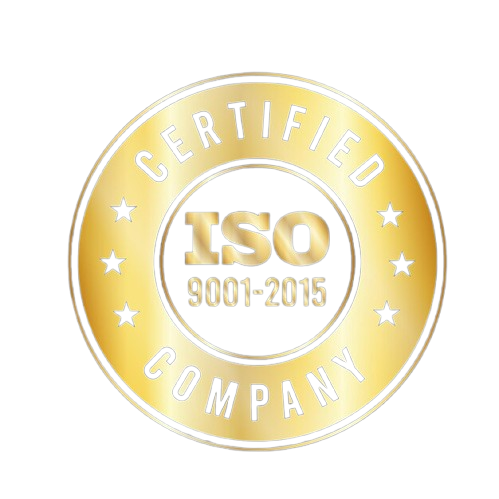Key Equipment for Efficient Cleanrooms: Essential Cleanroom Ancillary Equipment
Cleanrooms are highly regulated environments that require specialized equipment to control contamination, ensure operational efficiency, and maintain strict compliance with regulatory standards. While the primary components of cleanroom construction include walls, flooring, HVAC systems, and air filtration, cleanroom ancillary equipment plays an equally critical role in enhancing cleanroom functionality. Ancillary equipment supports day-to-day operations, contamination control, and personnel safety, making it indispensable for effective cleanroom management.
This article explores the key ancillary equipment essential for efficient cleanrooms, detailing how each piece contributes to maintaining cleanliness, optimizing workflows, and supporting regulatory compliance.
Understanding Cleanroom Ancillary Equipment
Ancillary equipment refers to the auxiliary tools and devices used within cleanrooms to support sterile processes, enable efficient operations, and control contamination. Unlike structural elements, ancillary equipment is often portable, customizable, and industry-specific, providing flexibility in various cleanroom environments. Key pieces of ancillary equipment in cleanrooms include items like gowning stations, pass boxes, air showers, and laminar flow hoods, all of which help reduce contamination risks and streamline cleanroom workflows.
In industries like pharmaceuticals, biotechnology, healthcare, and electronics, cleanroom ancillary equipment is integral to meeting regulatory standards and ensuring consistent product quality.
Key Cleanroom Ancillary Equipment for Efficient Operations
Several types of ancillary equipment are essential to cleanroom operations. Here’s a closer look at each and its role in supporting contamination control and workflow efficiency.
1. Pass Boxes
Pass boxes are enclosed chambers installed between cleanrooms and adjoining spaces to allow the safe transfer of materials without personnel movement, minimizing the risk of contamination. Pass boxes are available in two main types:
- Static Pass Boxes: Designed for low-contamination environments, static pass boxes prevent cross-contamination with interlocking doors but lack active airflow.
- Dynamic Pass Boxes: Equipped with HEPA or ULPA filters, dynamic pass boxes maintain positive pressure to eliminate contaminants and ensure sterile transfers, making them ideal for high-contamination-risk areas.
Pass boxes are crucial in facilities where materials must frequently move between sterile and non-sterile zones, such as in pharmaceutical and biotech manufacturing.
2. Air Showers
Air showers are enclosed chambers with high-velocity air jets that remove contaminants from personnel and equipment before they enter the cleanroom. Air showers are typically installed at cleanroom entry points, helping maintain cleanliness by reducing the risk of contamination introduced by personnel.
By using air showers, cleanrooms achieve several benefits:
- Improved Contamination Control: Air showers remove particles from clothing and surfaces, reducing airborne contaminants.
- Efficient Workflow: Personnel can quickly decontaminate, entering the cleanroom without manual cleaning steps.
- Increased Compliance: Air showers help facilities meet ISO and GMP cleanliness standards, supporting regulatory compliance.
3. Laminar Flow Hoods
Laminar flow hoods provide a controlled environment that directs HEPA-filtered air in a unidirectional flow over a designated workspace, protecting sensitive products and samples from contaminants. Laminar flow hoods are available in two types:
- Vertical Laminar Flow Hoods: These hoods direct air downward, sweeping contaminants away from the work surface.
- Horizontal Laminar Flow Hoods: These hoods direct air horizontally across the work area, offering unobstructed workspace access.
Laminar flow hoods are essential in applications requiring sterile environments for product handling, such as pharmaceutical compounding, cell culture work, and electronic assembly.
4. Cleanroom Garment Storage and Gowning Stations
Gowning stations are designated areas for cleanroom personnel to change into sterile garments, including coveralls, gloves, masks, and shoe covers, before entering the cleanroom. These stations may include cleanroom garment storage racks, benches, mirrors, and gowning cabinets to streamline the gowning process.
Key features of gowning stations include:
- Garment Storage: Shelving, cabinets, or racks to store and organize sterile garments.
- Waste Receptacles: For easy disposal of used garments, gloves, and other materials.
- Seating and Mirrors: Benches and mirrors to assist personnel in gowning procedures, reducing contamination risks.
By centralizing the gowning process, these stations improve contamination control and ensure personnel follow cleanroom protocols consistently.
5. Cleanroom Pass-Through Chambers
Pass-through chambers allow materials and samples to be transferred between rooms or zones without exposing the cleanroom to external contaminants. These chambers, typically equipped with interlocking doors, minimize the need for personnel movement between zones, helping maintain sterility.
Pass-through chambers support cleanroom efficiency by:
- Reducing Cross-Contamination: Interlocking doors prevent simultaneous openings, maintaining isolation between zones.
- Improving Workflow Efficiency: Pass-through chambers speed up the transfer process, allowing seamless operations.
6. Cleanroom Vacuum Systems
Cleanroom vacuum systems are specialized vacuums equipped with HEPA or ULPA filters to capture and contain contaminants without releasing particles back into the environment. These vacuums are essential for maintaining cleanliness by removing dust, dirt, and other particles from floors, walls, and surfaces.
Advantages of cleanroom vacuums include:
- Enhanced Contamination Control: HEPA filters capture even the smallest particles, ensuring thorough cleaning.
- Compliance with Cleanliness Standards: Cleanroom vacuums meet ISO and GMP standards, supporting regulatory compliance.
- Increased Efficiency: Regular vacuuming minimizes the risk of contamination buildup, keeping the cleanroom in optimal condition.
7. Biosafety Cabinets
Biosafety cabinets are enclosed workspaces designed to protect personnel, products, and the environment when handling hazardous or sensitive materials, such as biological samples. Equipped with HEPA filters and airflow control, biosafety cabinets are critical in laboratories, research facilities, and pharmaceutical environments where personnel and product safety are paramount.
Benefits of biosafety cabinets include:
- Personnel Protection: Contain hazardous materials, protecting personnel from exposure.
- Environmental Safety: Prevent harmful particles from escaping into the surrounding environment.
- Enhanced Sterility: HEPA filters ensure a contaminant-free environment for sensitive work.
8. Cleanroom Furniture and Workstations
Cleanroom furniture, such as stainless steel workstations, tables, chairs, and shelving, is made from non-shedding, corrosion-resistant materials to prevent contamination and withstand frequent cleaning. Stainless steel is a popular choice due to its durability, chemical resistance, and easy-to-clean surfaces.
Key features of cleanroom furniture include:
- Non-Porous Surfaces: Prevents the accumulation of dust, microbes, and other contaminants.
- Chemical Resistance: Withstands frequent sterilization with harsh chemicals.
- Ergonomic Design: Supports efficient workflows and minimizes personnel movement, reducing contamination risks.
Advantages of Using Cleanroom Ancillary Equipment
Utilizing cleanroom ancillary equipment provides several advantages for industries requiring high levels of cleanliness and regulatory compliance:
1. Enhanced Contamination Control
Ancillary equipment like air showers, pass boxes, and laminar flow hoods provide additional layers of contamination control, ensuring that airborne particles, microbial contaminants, and other impurities are kept out of cleanroom environments. This equipment helps facilities maintain strict cleanliness standards, which is particularly critical in industries like pharmaceuticals and biotechnology.
2. Streamlined Workflows and Efficiency
Ancillary equipment supports efficient workflows by reducing the need for manual cleaning, optimizing material transfer, and ensuring personnel follow contamination control protocols. For example, air showers quickly decontaminate personnel, pass boxes facilitate seamless material transfers, and cleanroom vacuums ensure thorough cleaning without disrupting operations.
3. Improved Regulatory Compliance
Cleanrooms in sectors such as pharmaceuticals, biotechnology, and electronics manufacturing must adhere to stringent regulations, including ISO and GMP standards. Ancillary equipment that meets these standards ensures that cleanroom facilities operate within regulatory requirements, reducing the risk of compliance issues and maintaining product safety.
4. Reduced Maintenance and Operational Costs
Cleanroom ancillary equipment contributes to long-term cost savings by enhancing the overall efficiency of contamination control processes. High-quality vacuum systems, for instance, reduce the buildup of particles and contaminants, lowering the need for frequent, intensive cleaning and maintenance. Pass-through chambers also reduce personnel movement, minimizing wear and tear on cleanroom components and fixtures.
5. Increased Safety for Personnel and Products
Biosafety cabinets, gowning stations, and cleanroom vacuum systems help protect personnel from exposure to hazardous materials, improve product safety, and maintain environmental cleanliness. These pieces of ancillary equipment reduce health risks for employees, support sterile product handling, and ensure a safe working environment within cleanrooms.
Best Practices for Using Cleanroom Ancillary Equipment
Using ancillary equipment correctly is essential for maximizing its benefits and maintaining contamination control in cleanroom environments. Here are some best practices for using cleanroom ancillary equipment effectively:
1. Train Personnel on Equipment Usage and Protocols
Training personnel on the proper use of cleanroom ancillary equipment, such as air showers, gowning stations, and biosafety cabinets, is essential to ensure contamination control procedures are consistently followed. Training programs should emphasize cleanliness standards, equipment handling, and maintenance routines.
2. Regular Maintenance and Calibration
To ensure peak performance, cleanroom ancillary equipment should be regularly inspected, cleaned, and calibrated. For example, HEPA filters in laminar flow hoods, biosafety cabinets, and vacuum systems must be replaced according to manufacturer guidelines to maintain effective filtration.
3. Incorporate Ancillary Equipment in Cleanroom Layout Design
Proper placement of ancillary equipment enhances cleanroom efficiency. For example, gowning stations and air showers should be positioned at the entry points, while pass boxes and pass-through chambers should be placed strategically between cleanroom zones. Efficient placement minimizes contamination risks and facilitates smooth workflows.
4. Monitor and Document Equipment Performance
Routine monitoring and documentation of ancillary equipment performance are crucial for ensuring consistent cleanliness and regulatory compliance. Documenting maintenance, calibration, and filter replacements provides a clear record for audits, ensuring that all equipment meets regulatory standards.
5. Establish Standard Operating Procedures (SOPs)
Creating and enforcing SOPs for each piece of ancillary equipment ensures that all personnel understand and follow contamination control protocols. SOPs should detail usage instructions, cleaning procedures, maintenance schedules, and emergency protocols, supporting a standardized approach to cleanroom management.
Why Choose Wise Link for Cleanroom Ancillary Equipment
Wise Link specializes in providing high-quality cleanroom ancillary equipment that supports the unique needs of industries such as pharmaceuticals, biotechnology, electronics, and healthcare. Our products meet ISO and GMP standards, ensuring compliance and optimal performance in contamination-sensitive environments. With a wide range of options and customization capabilities, we offer solutions that enhance cleanliness, safety, and efficiency.
- Customized Equipment Solutions: We provide tailored solutions to meet specific cleanroom requirements, from laminar flow hoods and pass boxes to specialized gowning stations.
- High-Quality Materials and Construction: Our ancillary equipment is designed with durable, contamination-resistant materials to withstand the demands of cleanroom environments.
- Expert Support and Maintenance Services: Our team offers ongoing support to ensure your equipment continues performing at peak efficiency, helping you maintain cleanliness and compliance.
The Importance of Ancillary Equipment in Efficient Cleanroom Operations
Cleanroom ancillary equipment plays a vital role in contamination control, regulatory compliance, and operational efficiency within cleanrooms. From pass boxes and air showers to laminar flow hoods and cleanroom vacuums, each piece of equipment enhances cleanliness, streamlines workflows, and protects both personnel and products.
If you’re looking to enhance your cleanroom operations with reliable ancillary equipment, Wise Link provides comprehensive solutions tailored to your facility’s specific needs. Contact us today for a consultation and custom quote to create a cleanroom environment that supports safety, efficiency, and compliance.
Equip Your Cleanroom for Peak Efficiency and Compliance
Discover Custom Solutions in Cleanroom Ancillary Equipment to Enhance Safety and Contamination Control. Contact Wise Link Today for a Free Consultation and Quote!




